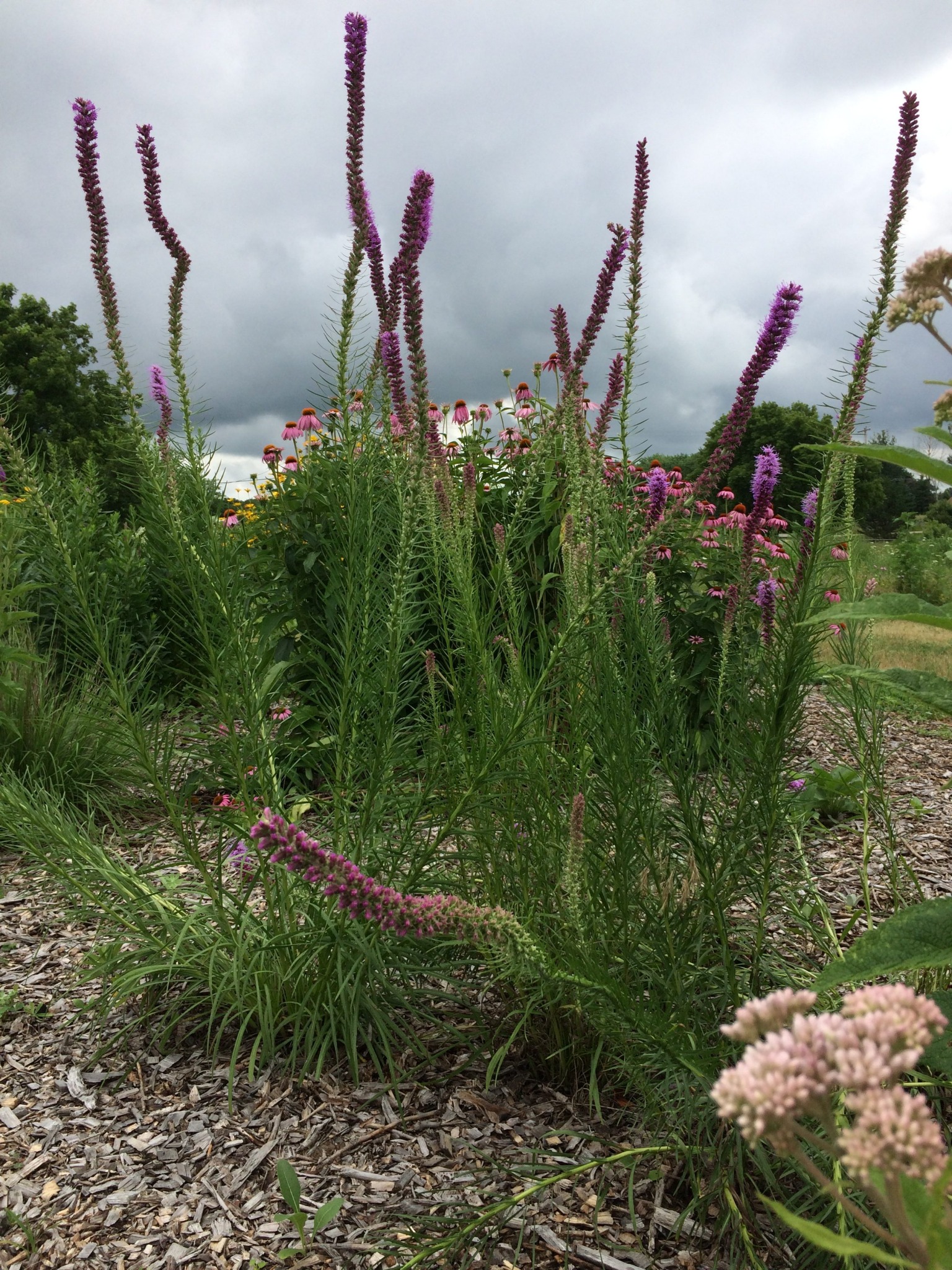Description
OUT OF STOCK
Tall, erect, purplish- pink spike in August-September
Tall, erect, purplish- pink spike in August-September
OUT OF STOCK
Tall, erect, purplish- pink spike in August-September
The description in the Chiltern Seeds catalog cannot be improved: “This is the most elegant and refined of the North American prairie grasses …the finest texture composed of the thinnest of thin, thread-like, glossy green blades,.. in autumn turning deep orange before fading to a light copper for the winter. In late summer the plants bear, on very slender stalks high above the foliage, unbelievably delicate, graceful flower panicles, excellent for cutting. ”One of internationally known garden designer Piet Oudolf’s 100 “MUST HAVE” plants, Gardens Illustrated 94 (2013)
Size: 2’ x 2’
Care: Full sun in well-drained soil
Native: from Canada in the north to Texas in the south, Wisconsin native
Wildlife Value: seeds are food for birds
Awards: Missouri Botanic Garden Plant of Merit & Great Plants for Great Plains Grass of the Year.
Sporobolos is Greek from sporo meaning seed and ballein meaning to cast forth because the seed readily falls from the flower (or dropseed, the common name). Ojibwa “Medicine Society” used roots to cure sores & “remove bile.”
Fragrant medium pink umbels, like an upside down ballerina’s skirt, July – September. One of internationally known garden designer Piet Oudolf’s 100 “MUST HAVE” plants, Gardens Illustrated 94 (2013)
Size: 3’-4’ x 2-3’
Care: Sun in moist to moist well-drained soil
Native: North America – all states except those along the Pacific Coast – Wisconsin native.
Wildlife Value: host for Monarch caterpillars, flowers are source of nectar for several butterflies
Named after Asclepias, a Greek god of medicine. Native American groups used Swamp milkweed – Chippewa to increase their strength & the stems made into twine; Iroquois to heal navels in babies, to increase or decrease urine and to make a person strong enough to punish witches; Meskwaki to drive out tapeworms; and Menominee used it as an ingredient in food – added to deer soup & cornmeal mush. Oneida used the root to remedy asthma and whooping cough. They made thread to sew moccasins with the stems. Lakota Sioux: “The pulverized root is made into a salve which is used to treat swollen glands. The young seed pods are edible after cooking. An infusion of the roots is used to treat asthma, rheumatism, syphilis, and a weak heart.” Listed as growing in England in Philip Miller’s Gardeners’ Dictionary, 1768. Grown at America’s 1st botanic garden, Elgin Botanic Garden 1811. Pressed specimen in Emily Dickinson’s herbarium. “The downy parachutes . . . attached to each seed are six times more buoyant than cork and five times warmer than wool. Large quantities of milkweed were grown for use as stuffing in pillows and lifejackets during World War II.” USDA Natural Resources Conservation Service.
Airy pink panicles like delicate billowing clouds of seed heads, top clumps of arching slender leaves in mid-summer persisting through winter.
Size: 2-4' x 18"
Care: moist soil in sun to shade
Native: Europe, Asia & No. America, Wisconsin native
Deschampsia named for French botanist Deslongchamps (1774-1849.) Caespitosa means that it grows in clumps. This species found by mid-1700’s.
“Bloom profusely” majestic, white daisies cover imposing, cheerful plant, August – September
Size: 5-6' x 3'
Care: full sun to part shade in moist well-drained soil.
Native: Maine to Florida, west to Texas and north to North Dakota and all areas in between
Wildlife Value: Supports over 40 bee species, moths, butterflies, and wasps.
Named in honor of 18th century English botanist, James Bolton. Asteroides means resembling as aster. Species introduced in 1758. Recommended for fall blooms in Wisconsin State Horticultural Society Annual Report, 1911.

